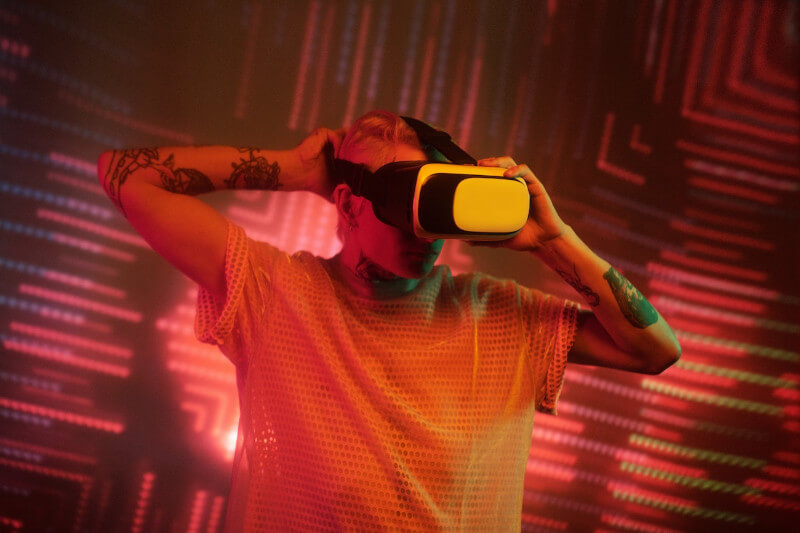With its many different countries, South Africa is a place where history and culture are alive in every street, dance, and song. As the digital age begins, a new rhythm is starting to form in which technology doesn’t replace custom but instead makes it better. In this dance of bytes and beats, Mzansi shows how the past and future of a country can fit together beautifully.
Beyond Beauty, A Sign Of The Times
South Africa’s rich and varied cultural mosaic has always been a source of inspiration for artists, storytellers, and now tech creators as well. In a time when everything seems to be going global, more and more South Africans want to stay connected to their roots. This mix of custom and technology is more than just pretty to look at; it also shows how a country can stay true to its roots while making steps into the future.
A Traditional Twist On Tech Wearables

Even though phone cases and laptop skins are clear signs of tech with a traditional touch, that’s not where the painting ends. In the world of wearables, especially smartwatches and exercise bands, there is a mix of old and new designs and features.
Local brands are making wearable faces that are based on the patterns of Xhosa beadwork or the designs on colourful Basotho blankets. Not only do they tell time and measure health, but they also remind people every day of the rich histories they carry with them.
Mpho Mokoena, a tech-lover from Johannesburg, talks about her thoughts. “Every time I look at my heart rate or messages, I see that pattern, which was inspired by the bead necklace my grandma wore. It’s a small thing, but it reminds me of where I come from all the time.”
Old And New Instruments
The combination isn’t just about how things look. Local tech experts are making digital instruments that sound like traditional South African instruments like the Mbira or Kudu horn. With these apps and tools, users, especially young people, can mix traditional sounds with modern beats to make a smooth blend of the past and the present.
The Durban music teacher Lindiwe Kunene uses these tools in her lessons. “It was getting harder to find traditional instruments in cities. Not only do these digital forms keep the sound alive, but they are also easier for young people to understand.
Platforms for Interactive Art
Museums and art galleries are trying out interactive screens that let people add modern features to traditional works of art. One example might be a digital canvas of a cave picture to which users can add modern elements or use traditional patterns to make something completely new.
“It’s about getting people to talk,” says art director Nkosana Dlamini. When someone can connect with an old piece and add their own meaning to it, it becomes a way for our ancestors and our generation to talk to each other.
With Tech And A Traditional Feel
The mix of history and technology isn’t just on the surface; it goes much deeper. Traditional materials are being used to make new versions of tech gadgets. Imagine a tablet with a back cover made of the same kind of fibres as traditional Bantu mats or headphones with padding made of the same kind of fabric as Tsonga bags. As users swipe, tap, and scroll, they can feel the rich fabric of South African culture. A tech accessory designer named Zanele Buthelezi talks about how important this tactile link is. “When you feel that familiar texture, it’s not just another gadget; it’s a piece of home, a piece of history.”
Cultural Calendars For Apps
Some local app makers are putting South African traditional calendars, moon cycles, and event markers into modern planner apps. These kinds of integrations help South Africans make sure they don’t miss out on important culture events or ceremonies because they are too busy with technology. In a time when people spend most of their time in front of screens, South Africa’s traditional tech makes sure that every contact, every look, and every touch is a bridge between the digital now and the stories of the past.
Tech In Places Of Culture

Tech isn’t just about tools. It can be found even in the most traditional places. Think about the ancient rock art places that are all over the country. They have been silent observers for thousands of years, but technology in the present day is giving them a voice. Augmented reality (AR) tours are becoming more popular. Visitors can see the stories behind each picture come to life when they wear AR glasses. Ancient tribes’ dances, hunts, and customs are no longer just static pictures. Instead, they are now stories that both locals and tourists can hear.
AR tour guide Lerato Ngwenya from Mpumalanga says, “Technology connects our ancestors to the digital kids. It’s one thing to look at art; it’s something else to understand the story behind it.
Using Tech To Keep Culture Alive
Technology’s ability to keep things alive may be the most important thing it does for society. In South Africa, people who love technology and people who care about their culture are working together to record languages, art forms, and oral tales that are dying out.
Thabo Moloi, who started the digital project “Voices of Yesterday,” talks about what he has learned. “We’ve made an app where elders can record songs, stories, and tales from their own culture. It’s not just a collection of stories; it’s also a place where people can ask questions and learn more about each one.”
Using 3D scanning, there are projects going on to digitally protect artefacts, making sure they will last and, more importantly, that they can be shared and studied all over the world without putting the original at risk.
Hertz and Heritage Get Along
Many people worry that fast technological progress will make it harder for people to keep their cultural identities. However, South Africa is a shining example of a different story. Here, megabytes and memories mix with apps and artefacts, and pixels show history with pride. As technology moves forward, it doesn’t leave behind the echoes of the past. Instead, it takes them forward, making sure the nation’s heartbeat is heard loud and clear in the digital age.
South Africa’s Digital Tapestry Bridges the Ages
In the big picture of time, South Africa is always redefining its position by weaving heritage into its modern steps. Culture and cutting-edge technology blend together in a way that isn’t just nostalgic. It reaffirms a country’s character and makes sure that even as we move quickly forward in the digital age, we leave behind traces of our ancestors’ knowledge. Heritage and innovation coming together is more than just a market trend; it’s a sign of South Africa’s resilient spirit and proof that we can honour the past while building the future. The way our everyday gadgets and apps show the dance between custom and technology is nothing short of poetic. They paint a vivid picture of a country that respects its roots while reaching for the stars.

